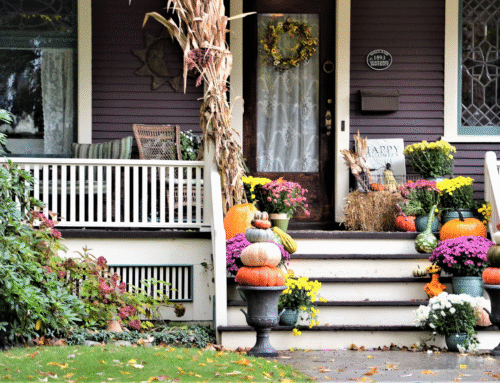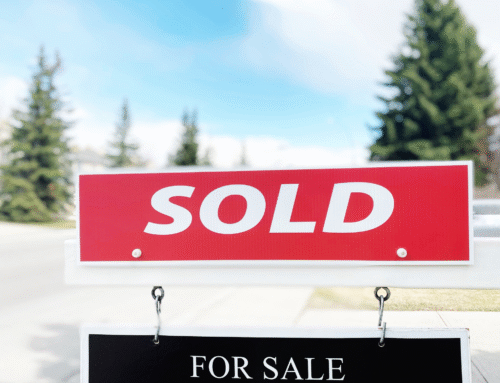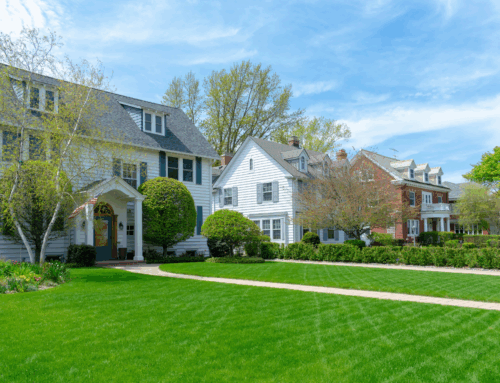Interest rates sit at the center of the housing market. They influence affordability for buyers, shape pricing power for sellers, and determine the pace of activity across Greater Philadelphia. While location and timing matter, no single factor carries as much weight as the cost of borrowing. When rates shift, behavior changes on both sides of a transaction. Understanding these dynamics is critical if you are planning to buy or sell a home.
The Basics of Mortgage Rates
Mortgage rates represent the cost of borrowing money to finance a home. When banks lend, they set rates based on broader economic conditions, inflation expectations, and Federal Reserve policy. For a buyer, even a small change in rates has a measurable impact on monthly payments. For example, the difference between a 6 percent and a 7 percent mortgage on a $400,000 home is more than $250 per month. That difference can be the deciding factor for whether a buyer qualifies for a loan. According to usbank.com, higher rates limit the pool of eligible buyers while lower rates expand affordability and demand.
Buyer Behavior in Rising Rate Environments
When rates climb, buyers often face affordability stress. Some reduce their budget, shifting from single family homes to townhouses or condos. Others delay entering the market altogether, waiting for conditions to stabilize. In Philadelphia this shift becomes visible in both urban and suburban markets. First time buyers, who often have limited down payments, feel the pressure first. They may postpone their purchase, continue renting, or target lower priced neighborhoods. Families looking to upgrade may also hesitate, unwilling to exchange a low rate on their current mortgage for a higher one on a new property. Sellers in these periods often notice fewer showings and slower offers because the pool of active buyers shrinks.
Buyer Behavior in Falling Rate Environments
When rates decline the opposite effect occurs. Lower borrowing costs increase purchasing power, which brings more buyers into the market and allows them to stretch for higher priced homes. A family that could afford a $350,000 home at 7 percent interest might qualify for a $400,000 home if rates drop closer to 6 percent. This increased competition often produces multiple offers and faster sales. Philadelphia’s recent history shows how rate declines fuel bidding wars in popular neighborhoods like Fishtown, Chestnut Hill, and suburban areas of Montgomery County. Lower rates also attract investors who calculate long term rental income more favorably when borrowing costs are reduced.
Seller Positioning When Rates Are High
Sellers navigating a high rate environment need to adjust expectations. While spring and early summer typically bring strong activity, elevated rates can dampen demand even in those seasons. Homes that are move in ready and priced accurately still sell, but the pace slows. Sellers should work with agents who can target motivated buyers, such as those relocating for work or needing more space for family growth. Emphasizing features that lower total cost of ownership—energy efficiency, updated systems, or lower property taxes relative to comparable neighborhoods—becomes more important. Sellers who remain flexible in negotiations often find they can still achieve strong outcomes even when buyer budgets are stretched thin.
Seller Positioning When Rates Are Low
Low rates often create the best environment for sellers. More buyers enter the market, leading to faster sales and competitive offers. Homes in good condition sell quickly and sometimes above asking price. For homeowners in Philadelphia and the surrounding counties, listing during a period of lower rates often maximizes return. Sellers who prepare their property carefully—staging interiors, addressing repairs, and boosting curb appeal—capitalize most effectively. In many cases sellers under these conditions do not need to offer concessions, since buyers are eager to secure homes before rates change again.
The Relationship Between Rates and Home Values
Over the long term interest rates directly affect property values. As explained by investopedia.com, higher rates decrease affordability, which places downward pressure on prices. Lower rates expand access to credit, supporting higher valuations. While other variables such as employment, local development, and demographics also play a role, the cost of borrowing sets the framework for how much buyers are willing and able to pay. In Greater Philadelphia this becomes evident when comparing neighborhoods. Areas with consistently strong demand, such as those close to universities or transportation hubs, maintain values more effectively during high rate periods, while outlying areas with less demand see sharper price adjustments.
The Emotional Side of Interest Rates
Interest rates influence not only numbers but also confidence. Buyers often watch rate movements closely, interpreting them as signals about broader economic health. A sudden increase can create hesitation even among those who can still afford payments. Conversely, a small drop may spark urgency, leading to faster decisions. Sellers should recognize this psychological layer. Positioning a home as a stable, long term investment that aligns with buyer priorities can ease concerns during volatile periods. Transparent communication about value, maintenance history, and neighborhood growth helps buyers feel secure despite fluctuations.
Case Example: A Buyer in Bucks County
Consider a young couple looking at homes in Bucks County. In the spring they budgeted $375,000 based on a 6.25 percent interest rate. By fall, rates increased to 7 percent, reducing their budget by nearly $30,000. Instead of pursuing a detached home, they shifted their search toward townhouses. A seller listing a $400,000 home at this time might experience slower traffic, but a seller with a competitively priced townhouse near transit could benefit from this shift in buyer affordability. The couple eventually closed before winter, but their decision was shaped entirely by interest rate movement.
Case Example: A Seller in Montgomery County
In contrast, a Montgomery County family listing their four bedroom home during a period of falling rates benefited from renewed buyer demand. Within two weeks they received multiple offers. The final contract price exceeded their initial expectations by 5 percent. The lower rate environment gave buyers more financial room to stretch, which directly improved the seller’s outcome. This example highlights how timing a listing around rate shifts can have a significant financial impact.
Planning Ahead as a Buyer
If you are preparing to buy, tracking interest rates should be part of your strategy. Getting pre approved early allows you to lock in a rate when favorable conditions appear. Even a quarter point drop can improve affordability. Buyers should also compare different loan products, such as fixed rate versus adjustable rate mortgages, since rate environments affect which product is most cost effective. Staying flexible with neighborhood choices expands options if rates change before you purchase. Monitoring rate forecasts with your lender ensures you are ready to act when the market aligns with your goals.
Planning Ahead as a Seller
Sellers benefit from tracking rate movements as well. Listing during periods of lower rates typically increases buyer traffic, but if you must sell during a high rate environment preparation becomes even more critical. Pricing must be realistic, marketing should emphasize strengths beyond cost, and presentation must be flawless. Sellers can also offer creative concessions, such as assisting with closing costs, which effectively reduce the buyer’s financing burden. Timing still matters, but with professional guidance you can achieve results regardless of interest rate cycles.
Local Perspective for Philadelphia
The Greater Philadelphia market reflects national trends while retaining unique characteristics. The city’s mix of historic rowhomes, modern condos, and suburban family houses creates varied buyer segments. Rates affect each segment differently. First time buyers often pause when rates rise, while higher income professionals may continue purchasing in desirable neighborhoods. Suburbs like Bucks and Montgomery counties remain popular due to schools and space, and rate fluctuations mainly determine how quickly homes sell rather than whether they sell. Sellers in these areas can still succeed in high rate environments by presenting value, while buyers can find opportunities if they are prepared to act decisively.
Conclusion
Interest rates shape the real estate market in direct and indirect ways. They influence monthly affordability, determine how much buyers can spend, and guide seller strategy. In Philadelphia and its suburbs, these dynamics play out differently depending on neighborhood, property type, and timing. Whether rates rise or fall, preparation and informed strategy remain the most important tools. If you are planning to buy or sell, now is the time to align your approach with the realities of the market. Contact Albright Real Estate at albrightrealestate.com to receive a personalized plan built around your goals, your property, and the current interest rate environment.








